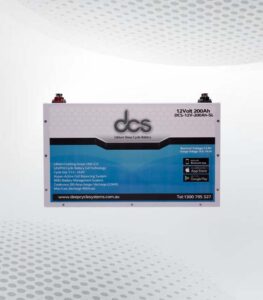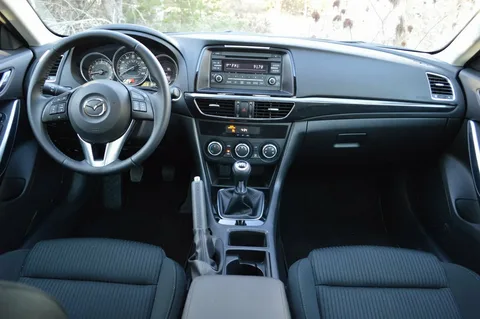In today’s world, renewable energy sources are becoming increasingly popular as the world looks for ways to reduce its carbon footprint and combat climate change. One such renewable energy source is solar power, harnessed through photovoltaic (PV) systems. These systems are environmentally friendly and cost-effective in the long run. PV systems become even more efficient and reliable when combined with energy storage solutions such as lithium-ion batteries. In this blog post, we will explore the impact of PV Battery Hybrid System and why they are the future of sustainable energy.
How PV Battery Work and Their Importance
Photovoltaic (PV) systems convert sunlight into electricity, utilising solar panels comprised of cells that absorb solar energy to generate direct current (DC). This DC is then transformed into usable alternating current (AC) through an inverter to power various establishments. Crucially, the innovation of integrating batteries into these systems elevates their functionality significantly. Batteries store the surplus electricity produced, enabling the system to maintain power supply even without direct sunlight.
PV systems enhance their utility by providing a consistent energy source, which is crucial for ensuring reliability and resilience. It is a buffer against power fluctuations and interruptions, making solar power a more viable and stable energy solution. This capability to store and deploy electricity on demand underpins the importance of PV systems in advancing the practicality and adoption of solar energy solutions.
Benefits of Using the Best PV Battery System
Opting for the Best PV Battery System brings many advantages, markedly enhancing energy autonomy. This independence is pivotal, especially during unforeseen power outages or in remote locales with sparse grid connectivity. These systems empower users to harness and conserve their self-produced electricity, circumventing dependence on external power sources. A notable advantage is the potential for substantial reductions in electricity expenditures.
By capitalising on the ability to store excessive energy generated throughout daylight hours, this stored power can be utilised during peak demand times when energy costs surge, leading to significant savings. Moreover, the environmental benefits cannot be overstated; by decreasing reliance on fossil fuels and reducing one’s carbon footprint through renewable energy, users contribute positively to the global effort against climate change. This shift has implications for the individual’s economic benefits and plays a crucial role in advancing sustainability and promoting environmental stewardship on a broader scale.
Overview of Lithium Ion Batteries For PV
Due to their superior characteristics, lithium-ion batteries stand at the forefront of energy storage technology for Photovoltaic (PV) systems. Renowned for their high energy density, these batteries offer a significant amount of power in a relatively small package, making them an ideal choice for residential and commercial applications where space is at a premium. Their longevity is another key factor, with the ability to withstand thousands of charge and discharge cycles before experiencing any notable degradation in performance. This resilience translates into a dependable long-term energy storage solution, crucial for effectively utilising solar-generated electricity.
Fast charging capabilities further distinguish lithium-ion batteries, ensuring that energy harvested during peak sunlight hours can be quickly stored for later use. This feature is particularly beneficial in optimising the efficiency of PV systems, enabling them to meet energy demands even after the sun has set. Moreover, lithium-ion batteries’ compact and lightweight nature simplifies the installation process and offers flexibility in system design, allowing for customised setups tailored to specific energy needs.
Additionally, these batteries maintain a low self-discharge rate, minimising minimising energy loss over time when not in use. This efficiency in energy retention is vital for maximising the availability of stored solar power and ensuring a reliable energy supply that can adapt to varying consumption patterns.
Understanding PV Hybrid Systems
PV Hybrid Systems combine the efficiency of solar energy generation with the flexibility of energy storage, providing a seamless integration for an uninterrupted power supply. At the heart of this synergy lies the ability to store excess solar power during peak production times for use during periods of low sunlight or high demand. This dual approach enhances energy independence and allows for a more controlled and strategic power utilisation.
These systems’ architecture is designed to optimise the balance between energy production and consumption. By incorporating smart technology, PV hybrid systems can automatically switch between stored energy and direct solar power, depending on the immediate needs and conditions. This intelligent management extends the usability of solar energy into the night or during cloudy days, significantly reducing the need for traditional electricity sources.
An intrinsic advantage of the PV battery hybrid setup is its adaptability to fluctuating energy costs and demand patterns. With the ability to store energy, these systems can deploy stored power during peak tariff periods, offering considerable savings on energy bills. This strategic usage aligns with the broader energy efficiency and cost-effectiveness goals, making PV hybrid systems an exemplary model of modern sustainable energy solutions.
Applications and Use Cases for PV Battery Systems
PV battery systems are versatile, catering to various applications across various sectors. Within the domestic sphere, these systems empower homeowners by slashing electricity bills and bolstering energy self-sufficiency, particularly in regions prone to power outages or with limited access to the national grid. For businesses, adopting PV systems can be a strategic move to mitigate operational risks associated with power disruptions whilst capitalising on the potential for energy cost savings.
On a larger scale, utility operators utilise these systems to enhance grid stability, integrating renewable sources more effectively and responding dynamically to fluctuations in demand and supply. Moreover, in remote or off-grid locations, PV systems are indispensable, providing a primary power source that can support various activities, from agricultural operations to ecotourism facilities, ensuring that economic and social activities can proceed without the constraints of conventional energy availability. These diverse applications underscore the adaptability and significance of PV systems in paving the way towards a more resilient and sustainable energy landscape.
Factors to Consider When Choosing a PV System
When selecting a PV system, several critical considerations must be considered to ensure the choice aligns with one’s energy needs, financial capacity, and environmental goals. Firstly, assess the energy consumption of your household or business to determine the system size required to meet your electricity demands efficiently. This step involves a thorough evaluation of past electricity bills and usage patterns.
Secondly, the available space for installing solar panels significantly influences the type of system you can accommodate, with rooftop dimensions and orientation playing pivotal roles in potential energy production.
Thirdly, the local climate and average sunlight exposure must be factored into your decision-making process, as these elements directly impact the effectiveness of solar energy generation. The quality and warranty of the solar panels and battery storage system also warrant close examination, as these elements contribute to the system’s longevity and reliability.
Future Trends in PV Systems and Technology
As the global demand for clean energy sources surges, the PV system landscape is poised for transformative changes driven by relentless innovation and sustainability goals. A key trend on the horizon is integrating artificial intelligence (AI) and machine learning (ML) into PV systems, enhancing efficiency through predictive analytics and optimised energy management. These technologies promise to revolutionise how solar energy is harvested, stored, and utilised, making systems more responsive to environmental variables and user demands.
Another significant development is the advancement in battery technology, with research focusing on lithium-ion solutions, such as solid-state batteries that offer higher energy densities, faster charging times, and improved safety profiles. This could significantly reduce the size and cost of energy storage systems, making solar energy more accessible and appealing.
Additionally, the advent of building-integrated photovoltaics (BIPV) presents a seamless fusion of solar technology into construction materials, turning entire structures into power generators. This approach enhances aesthetic appeal and opens up new avenues for solar adoption in urban settings.
Installation and Maintenance of Lithium Ion Batteries For PV Systems
Ensuring the optimal performance and lifespan of Lithium Ion Batteries For PV Systems necessitates careful attention to their installation and ongoing upkeep. Ideally, these batteries should be positioned in environments that remain cool and dry, safeguarded from the direct impacts of sunlight and extreme temperature fluctuations. This measure aids in averting overheating incidents and potential damage. Regular upkeep routines, encompassing cleaning battery terminals to remove any accumulated debris and inspecting for any signs of leakage, are pivotal for maintaining operational efficiency.
Routine monitoring of the batteries’ charge state and voltage is crucial. Such vigilance helps in averting overcharging or deep discharging scenarios, which can significantly diminish the batteries’ effective lifespan. Adhering to these guidelines ensures that lithium-ion batteries for PV systems maintain their functionality and continue to support the renewable energy landscape effectively.
Cost Efficiency and Long-Term Savings
Investing in a PV hybrid system represents a forward-thinking approach to energy management, marked by its potential to usher in significant cost efficiencies and long-term savings for the user. The initial financial outlay, whilst higher than conventional energy setups, is counterbalanced by the considerable reductions in utility bills experienced over the system’s lifespan.
Furthermore, the landscape of incentives and rebates provided by various governments enhances the affordability of such renewable energy systems. These financial mechanisms are designed to lower the barrier to entry for individuals and businesses considering the switch to solar energy, thereby accelerating the return on investment. It’s also pertinent to consider the evolving energy market dynamics, where the cost of solar panels and batteries is downward, spurred by technological advances and increased manufacturing scale.
Beyond the direct financial benefits, there’s an added advantage in property valuation. Properties equipped with modern, efficient energy systems, such as PV battery hybrids, are increasingly sought after, commanding higher market values and attractiveness to eco-conscious buyers. While not immediately quantifiable in terms of savings, this aspect represents a strategic investment in the property’s future marketability and worth.
Conclusion
Ultimately, the PV Battery Hybrid Systems integration represents a forward-looking approach to energy sustainability and financial efficiency. Merging the capabilities of solar generation with advanced energy storage, these systems promise not only to diminish our ecological footprint but also to usher in notable cost savings over their lifespan. As advancements in technology continue to enhance their efficiency and reduce costs, the appeal of these systems is set to grow, positioning them as a compelling choice for those committed to environmental stewardship and economic savvy.
FAQ’s
What are the main advantages of a PV battery hybrid system?
PV battery hybrid systems offer enhanced energy independence, the ability to store surplus power during peak times or outages, significant savings on electricity costs, and a reduced carbon footprint by relying on renewable sources.
How long do lithium-ion batteries last in PV systems?
Lithium-ion batteries for PV systems typically have a lifespan of 10 to 15 years, depending on usage patterns and maintenance. They provide thousands of charge and discharge cycles with minimal performance degradation.
Can PV systems operate during power outages?
One key benefit of PV systems is their capability to provide power during outages, ensuring that your home or business remains operational using the stored energy.
| Related Business Listings |
| Directory Submissions |
| Regional Directory |




